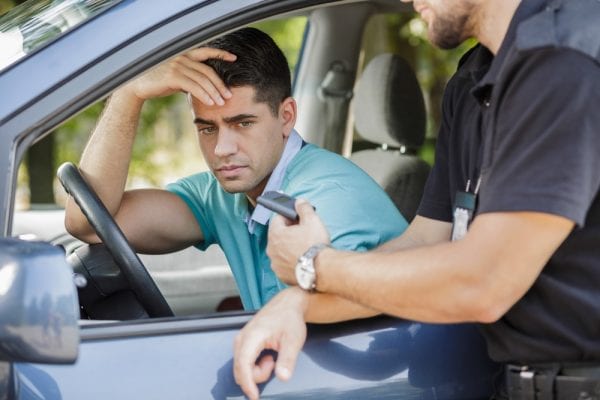
There are many ways to beat criminal charges. Prosecutors must prove every element of every offense beyond a reasonable doubt. Many times, there simply is not enough evidence to meet this burden. Other times, there is a defense available. Insanity and self-defense are two examples. In some cases, voluntary intoxication may be a defense, in addition to a mistake of fact.
Other defenses are procedural. If a Minnesota DWI lawyer finds procedural irregularities, those irregularities may invalidate the arrest. If the arrest is invalid, the case cannot go forward.
Reasonable Suspicion Stops
In cases like 2016’s Utah v. Streiff, the United States Supreme Court has considerably watered down this rule. Yet the fundamental requirement remains in place. To pull over a driver for suspicion of DWI, a Minnesota police officer must have reasonable suspicion. This is a low standard of proof which basically involves “specific, articulable facts” along with the officer’s interpretation of those facts, based on the officer’s “gut instinct.”
Most DWI arrests involve traffic stops. Some aspects of reasonable suspicion in these initial stops include things like:
- Erratic Driving: Alcohol impairs both motor skills and judgement ability. Weaving is a classic example of alcohol-induced erratic driving. However, officers are just as likely to pull over a suspect for a non-moving violation, like a non-working headlight.
- Bloodshot Eyes: Fatigue, cigarette smoke, and alcohol are three of the major causes of this condition. So, bloodshot eyes by themselves do not prove anything related to DWI.
- Odor of Alcohol: If officers detect an odor of alcohol coming from the defendant’s clothes or vehicle, such evidence only establishes that someone close to the defendant had been drinking. If the odor comes from the defendant’s breath, such evidence only proves consumption.
If the officer relies only on one of these items for reasonable suspicion, a Minnesota DWI lawyer may have a basis to challenge the arrest. The more evidence there is, the harder such challenges are to win.
Other reasonable suspicion DWI stops involve third-party tips. There is no hard-and-fast rule concerning the reliability of these tips. So, Minnesota DWI lawyers may challenge them on several different grounds. The source is one example. Tips that come from fellow officers are highly reliable. Anonymous tips, on the other hand, are highly unreliable. If the tipster doesn’t vouch for the information, why should anyone else believe it? All other tips are somewhere in the middle.
High-intensity Selective Traffic Enforcement Program campaigns (STEP campaigns) introduce a new element into the mix. STEP stops are often easier for Minnesota DWI lawyers to challenge. Procedure varies by jurisdiction. Generally, during STEP campaigns, officers are pulled from their normal duties, sent to a certain part of town, and instructed to write as many DWI or other citations as possible. The result is something like a police dragnet. These dragnets often ensnare sober motorists along with intoxicated ones.
At all traffic stops, it’s usually best to comply now and complain later. Obey lawful commands, politely refuse to answer questions or perform sobriety tests, and let a Minnesota DWI lawyer handle the rest.
DWI Checkpoints in Minnesota
Drivers should respond in basically the same way at DWI roadblocks. Under state law, motorists must provide certain information for inspection, usually a drivers’ license and proof of insurance. But motorists have no legal duty to answer questions or even roll down their windows.
Most checkpoints pop up during certain holidays, like New Year’s Eve, which are associated with drinking and driving. Police officers at checkpoints do not need reasonable suspicion to pull over a motorist. In exchange for this power, there are a number of rules, including:
- No Discretion: Every decision, including the time, location, and method of pulling over vehicles, must come from a supervisor. Officers at the scene have no authority to make even miniscule changes.
- Preset Method: Officers cannot detain motorists who do not “look right” and wave other ones through. The method must be totally random; for example, officers might detain every second or third vehicle.
- Minimal Disruption: Officers usually cannot detain every motorist because such a checkpoint would be too time-consuming. As a rule of thumb, any delay more than four or five minutes is too long. That includes both the time waiting in line and the interaction with the officer.
Other requirements include prior publicity which gives motorists the chance to stay away from the area and sufficient signage which informs motorists about the purpose of the checkpoint. If even one requirement is lacking, the checkpoint may be legally invalid.
Individuals also have the right to turn around and avoid DWI roadblocks. If that happens, motorists can expect police cars to tail them for at least several blocks. If these officers develop reasonable suspicion, as outlined above, they may pull over the driver.
Call Today To Speak With A MN DWI Lawyer From Carlson & Jones
Procedural irregularities may stop a criminal case in its tracks. For a free consultation with an experienced Minnesota DWI lawyer, contact Carlson & Jones, P.A. Home and jail visits are available.

